Charger Olight UC
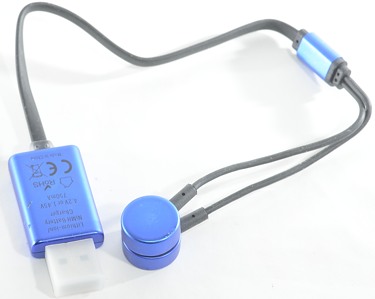
Olight has made a very simple charger with no slots, but only magnets for battery connections. This is nothing new, except Olight has improved it significantly: Both LiIon and NiMH and no polarity.


The pack is very simple and contains only the charger.
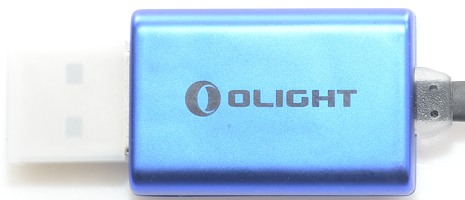
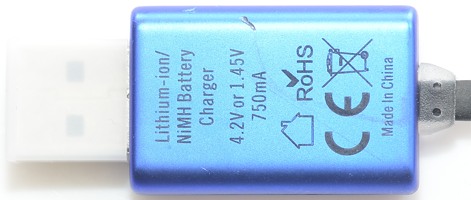
The clear plastic around the wire has a red and green led behind it. This means it will be read while charging and green when done. The led will flash slowly red when not connection to any battery (Both with open and shorted connections).
The leds are fairly weak.
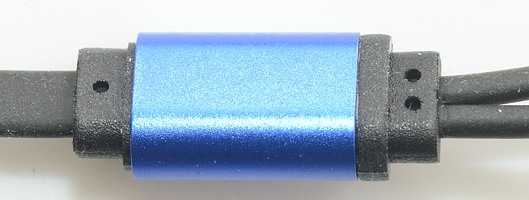
In this block the wire split into two, one for each end of the battery.
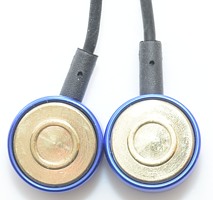
The two magnets.
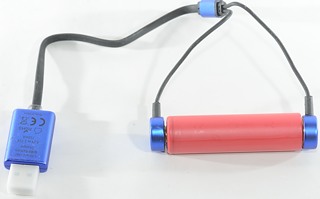
Here the magnets are connected to a battery.



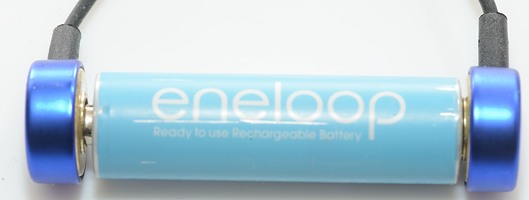

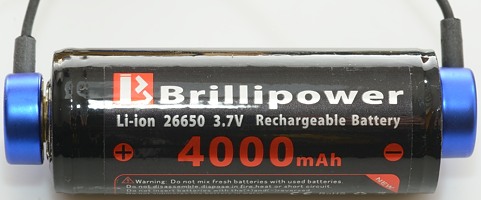
Only limit on battery size is charge current.
The current is a bit high for small cells, but some 14500 and 16340 will be acceptable because the current drops when voltage increase.
Measurements
- Will discharge a LiIon battery with 1.1mA or 0.7mA (Depending on direction) when not powered
- Will discharge a NiMH battery with 0.3mA or 0.2mA (Depending on direction) when not powered
- Will charge a LiIon with 0.1mA with 4mA pulses when charging is finished.
- Below 1 volt it will charge/discharge with 4mA
- Between 1V and 1.7V the charger assumes NiMH
- Between 1.7V and 3V it assumes LiIon and it will slow charge (0.3A)
- Above 3V it will charge with full current
- The charger will not restart if the voltage drops.

The charger uses CC/CV charging, but cannot deliver full current when the battery voltage is above 3.9V, termination is at 100mA.
This is a good charge curve.
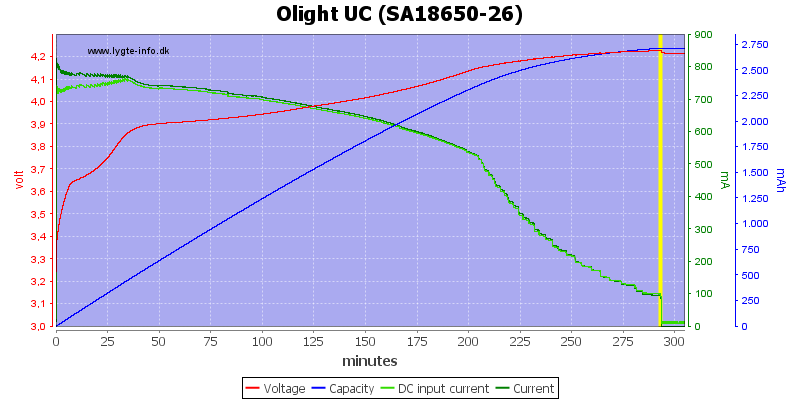
This cell has higher charge voltage and the current will be a bit below maximum current.
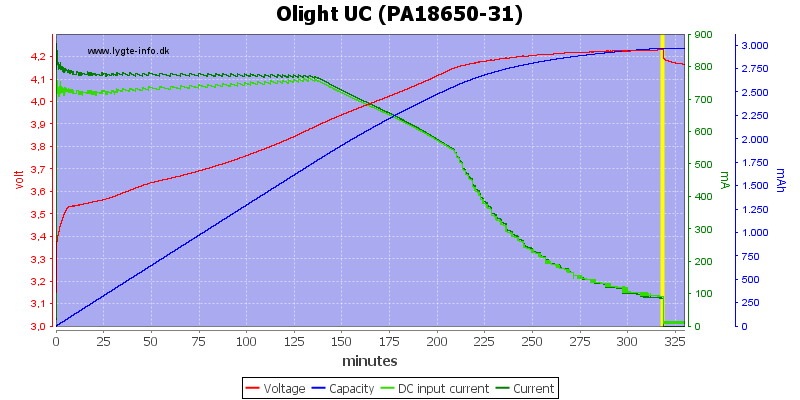
Works fine.

This cell is old, again the charge voltage is high and the current drops a bit.
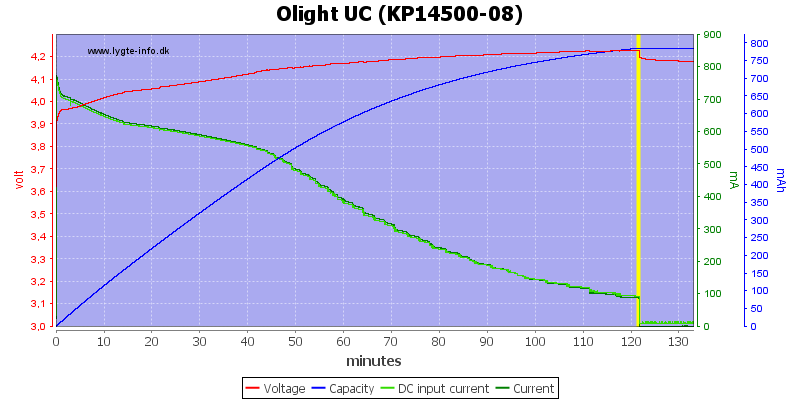
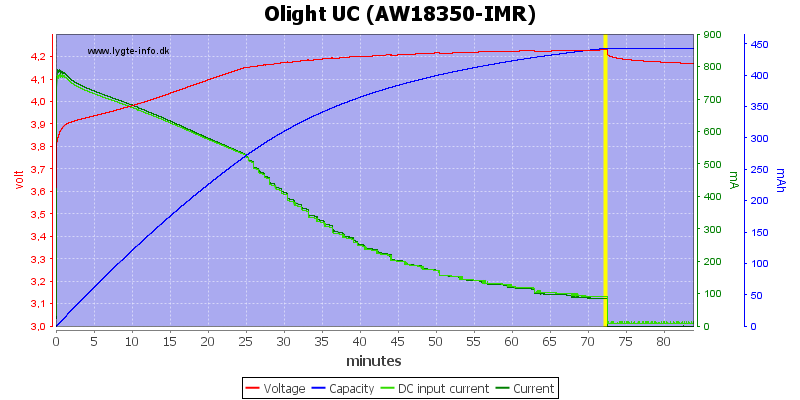
On paper the charger current is too high for these cells, but in praxis it is not that bad. A new cell would be charged with too high current at the start of charge and this is the time where the battery can best tolerate it.

Here I have added a 0.5ohm resistor in series with the usb power to simulate a long cable or weak usb charger. The charger do not handle that well, it terminates at 4.1V and 400mA.

M1: 33,2°C, M2: 25,7°C, HS1: 43,0°C
The charger get a bit warm and the battery stays cool.

It takes a few second for the charger to initialize a LiIon charge.
NiMH batteries

The charger uses voltage detection for NiMH batteries and not any significant top-off or trickle charge. This means the batteries will be slightly below a full charge.
The charge current for NiMH is 500mA
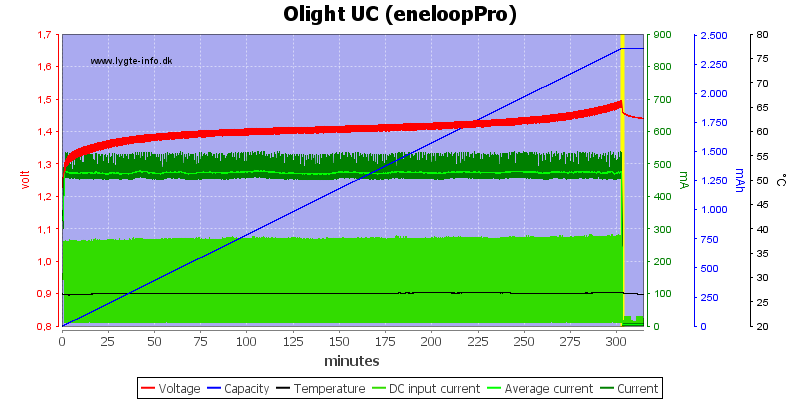
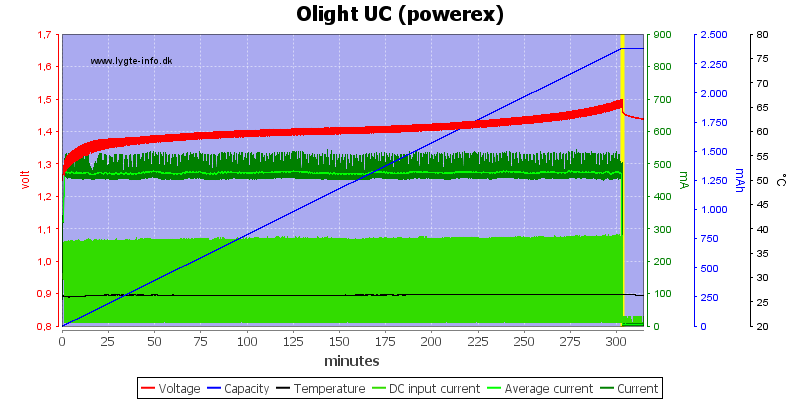
The eneloopPro and powerex are handled fine.

The charger cannot handle my old worn out eneloopXX (This battery is not really useable anymore).
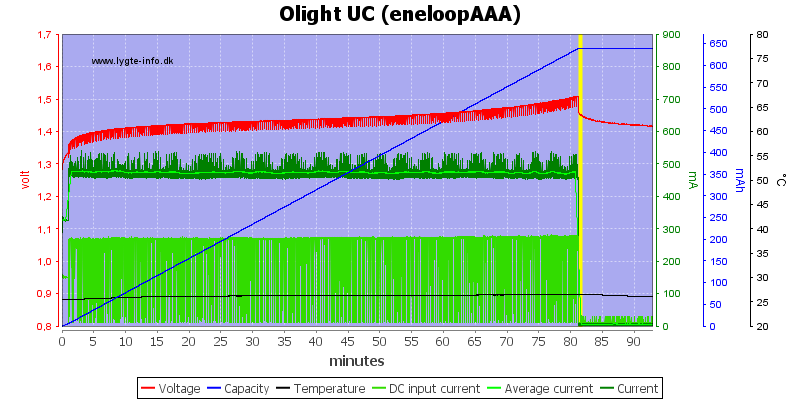
The AAA cell is handled fine.
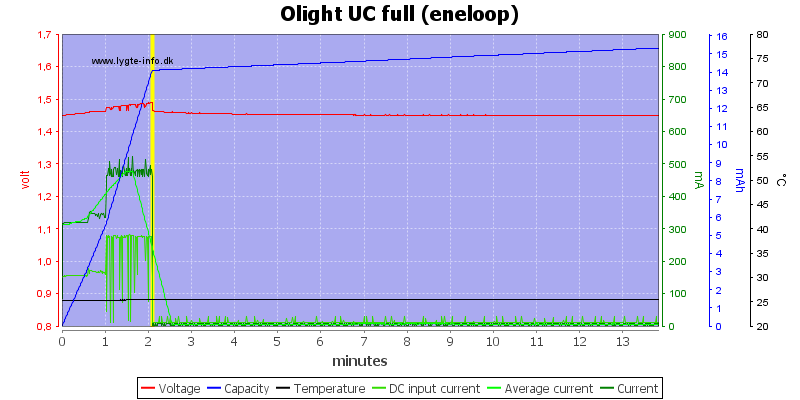
With voltage termination the charger is fairly fast at detecting a full cell
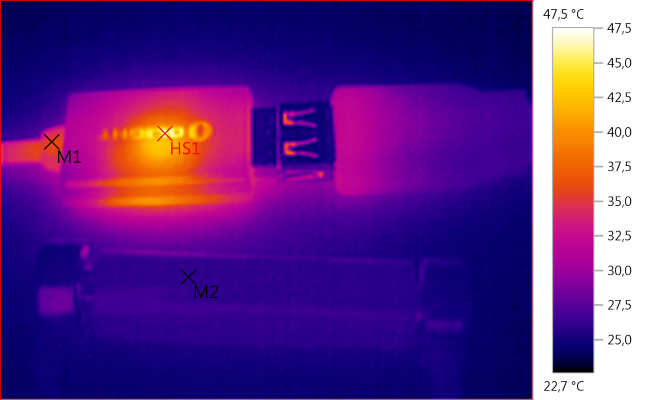
M1: 35,7°C, M2: 26,0°C, HS1: 47,5°C
The charger get a bit warm, but the battery stays cool.
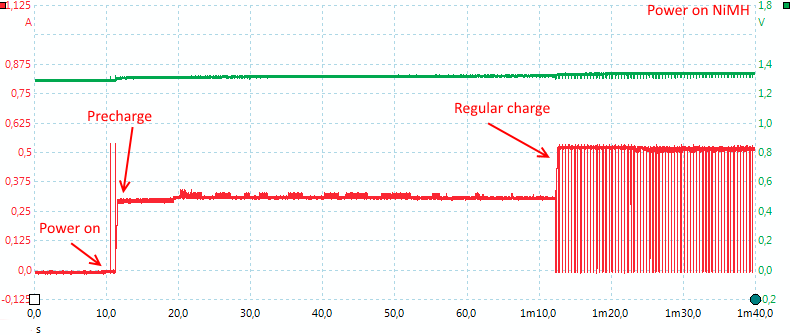
The power on sequence is a bit long when charging NiMH.

The charger is fairly fast to get into the precharge phase, but there are some strange pulses.
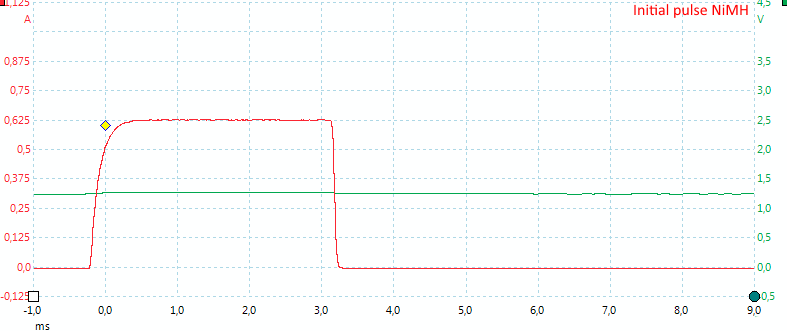
I do not know the reason for these pulses, they do both look the same. They do not prevent the charger from trying to charge alkaline cells.
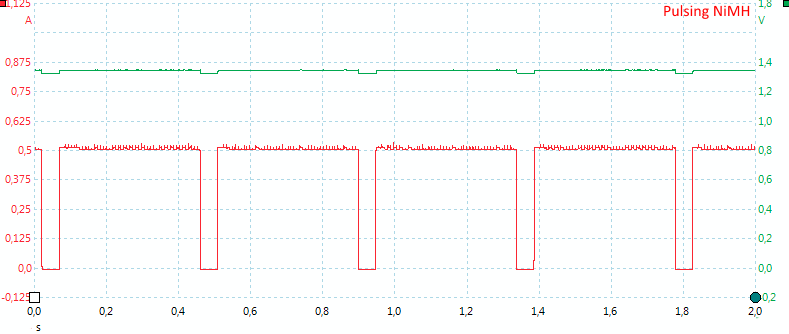
As usual for a NiMH the current will be turned off when checking voltage.
Conclusion
This is a very compact usb charger and it is fairly useful for many cells, it works best with a good stable usb power.
Because the charger is isolated from the cells it will never heat them. I like the automatic polarity, but I would have like the charge indication leds to be a lot brighter.
I will call it a good charger and the best I have seen of this type (usb with magnetic clamps).
Notes
Here is an explanation on how I did the above charge curves: How do I test a charger

































